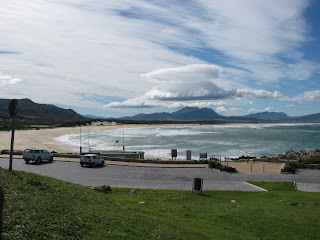Gedurende die vakansie stap ek agter drie seuntjies van so tussen 9 en 11 jaar oud. Sonder dat ek probeer of wil luister, kom ek agter dat hulle besig is om oor ontwerpersname (brands) te praat. Sommer so in die loop doen hulle ’n inprompto SWOT-analise van al die brands in hulle leefwêreld. Sonder inspanning vloei die een naam na die ander oor hulle lippe.
Wat vir my nog meer opvallend is, is dat dit lyk of hulle dalk nie te onhandig met ’n rugbybal sal kan wees nie. Ek wonder of hulle die name van sportmanne en -vroue ook so glad oor die tong kan rol?
Wat het gebeur dat gesonde seuns eerder oor WAT hulle dra en oor die brand van die kledingstuk praat as oor hulle helde? Is dit hul mammies of is dit die celebrities wat hulle oor TV sien wat hulle so beïnvloed en breinspoel?
Eers oor die mammies. Volgens Alissa Quart is dit nie ’n vreemde verskynsel om middeljarige moeders in winkelsentrums te kry wat dieselfde nommertjies dra as hul elfjarge dogters nie. Net soos die tieners gouer “ouer” word, het daar ’n parallel ontstaan van moeders wat langer jonk (wil) bly.
In her book Branded Quart writes that “over the last decade, there has been an exponential increase in the intensity that manufacturers employ to sell their stuff to the youth. Today’s teens are victims of the contemporary luxury economy. They have grown up in the age of the brand, bombarded and defined by name products and intrusive and clever advertising strategies. Raised by a commodity culture from the cradle, teens’ dependably fragile self-images and their need to belong to groups are perfect qualities for advertisers to exploit.”
She argues that “teens suffer more than any sector of society for this wall-to-wall selling. They are at least as anxious as their parents about having enough money and maintaining their social class, a fear they have been taught is best allayed by more branded gear. And they have taken to branding themselves, believing the only way to participate in the world is to turn oneself into a corporate product or a corporate spy to help promote the products to other kids.”
If we take a look closely around us, we will discover that corporations spend billions of rands annually to woo teen consumers. These efforts of the brand empires to control young minds and wallets take marketing strategies to a dangerous new level.
Hoe nou gemaak? Moet ‘n mens alles met etikette op verbrand? Ek wens ek het die antwoord gehad! Wat ons wel besef, is dat die beheptheid met ontwerpersname ongesonde afmetings aangeneem het.
Miskien kan ons weer begin om aan ons tieners ’n voorbeeld te stel van hoe om met brands om te gaan. Nie as slawe daarvan nie, maar as verbruikers daarvan. Laat die brand vir jou werk en nie jy vir die brand nie.
Meer nog, cool het niks met ’n etiket uit te waai nie. Cool kom van binne. Dit is die persoon binne die ontwerpersitem wat die cool veroorsaak. Nie die brand aan die persoon se lyf nie.
As parents and schools we can sensitise ourselves about the pressure brands put on our children. Maybe we can coin a cool unbranded slogan like: First the person; then the teenager?
Al die gepraat oor brands laat my dink aan die amptenaar van Waterwese wat een goeie dag daar by oom Barend se plaas op Garies opdaag.
Sommer so met die afklim laat hy oom Barend verstaan dat hy hier is om sy plaas te kom inspekteer. Kwansuis alles oor die watervoetspoor en dié dinge.
Oom Barend is heel inskiklik, maar waarsku die man om hom nie in die naaste kamp te begewe nie.
Die amptenaar hak af: “Meneer, I have full authority of the ANC Government with me. See this card? This card means I am allowed to go wherever I wish on any agricultural land. No questions asked or answered. Do you understand?”
Oom Barend knik sy kop en tel sy gereedskap op en gaan voort met waarmee hy besig was.
Nie lank nie en hy hoor gille en sien die man van Waterwese hardloop met die plaas se stoetbul kort op sy hakke. En die bul is besig om met elke tree die resies te wen. Die amptenaar gil paniekbevange dat iemand hom asseblief moet help.
Oom Barend los alles waarmee hy besig is en storm na die kamp se draad en skree uit volle bors:
“Jou kaart! Jou kaart! Wys hom jou f*@*#! kaart!
Image: Nuttakit/FreeDigitalPhotos.net



